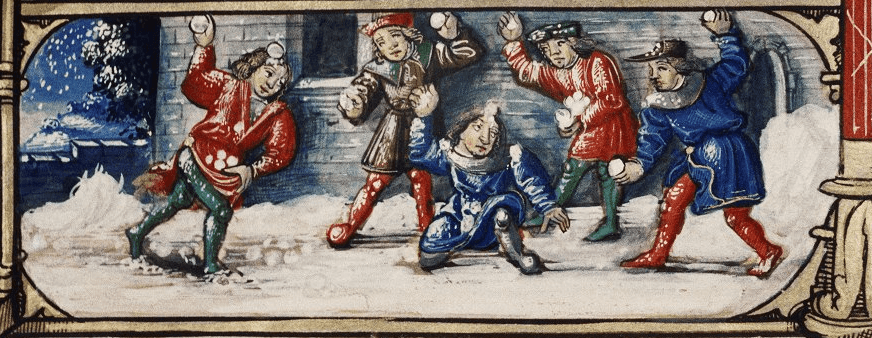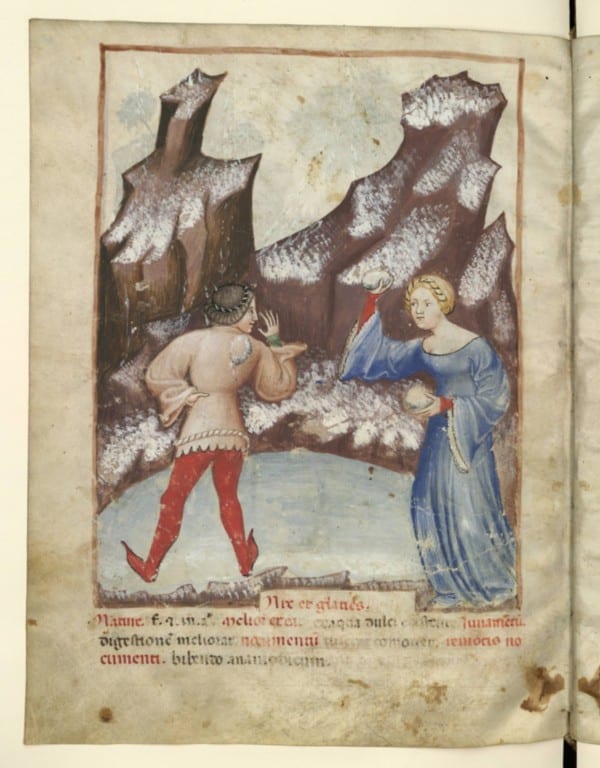Medieval Snowball Fights
By Arendse I Lund, on 21 December 2016
Medieval illuminations are one of the great delights of working with manuscripts. Many times fanciful, sometimes austere, and frequently religious, these images and marginalia provide a delightful insight into the cultures that made them.
Contemplating the Cat depicted some of that diversity in marginalia and illumination but with the winter solstice upon us, I thought I’d shed a light on the colder illuminations. Snowball fights are some of those illuminations that are always cheery, showing that winter play really has not changed all that much in the centuries since these manuscripts were created.
This illumination from the Walters Collection is appended to a calendar describing December Feast Days. This was an important topic in medieval manuscripts as Feast Days had to be meticulously calculated so that fasting and celebrations would occur on the correct days. Instead of an illumination depicting a nativity, or another religious topic as was common, this illuminator instead chose a winter scene—a snowball fight.
Winter was an understandable theme in medieval works. The eponymous prince in the Old English Dialogue of Solomon and Saturn inquires what the purpose of snow falling is and the Maxims I promises that good weather will return once more. The majority of early medieval works were religious; it is only around the 14th century that an increasing number of secular works are produced and illuminated.
In these manuscripts, snowball fights aren’t confined to children either; people of all ages, men and women, can be seeing hefting an icy ball creating an endearing lightheartedness to winter that we might otherwise overlook.
Illuminations are a great way to see what games would have been played and known in the Middle Ages. Jenneka Janzen wrote about the evidence for medieval board games: chess, backgammon, etc. Card playing is also well documented.
Typically, illuminators would have depicted scenes familiar to them or that they had high confidence in drawing. (Sketches and pen trials often appear on folios considered less important, or in the margins, testing designs and scenes.) The winter scenes here were done in detail with great skill.
As the demand for manuscripts grew, those with the money could afford to have them illuminated precisely how they desired and more richly detailed and elaborately decorated scenes appear. Books of Hours, as personal books of devotion, were particular favorites to ornately illuminate.
While my dreams of a white Christmas are unlikely to come true, at least I can pretend while looking at medieval manuscripts.
 Close
Close





